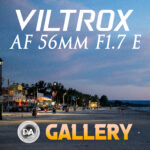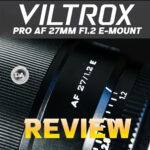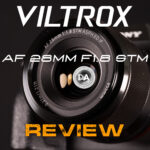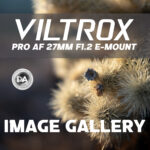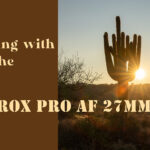
Viltrox AF 56mm F1.7 E-mount Review
The Viltrox AF 56mm F1.7 is not an unknown commidity to me. I reviewed in on Fuji X-mount earlier this year, which is, frankly, the most challenging platform that I review lenses on for two reasons: 1) Fuji’s 40MP APS-C sensor is extremely demanding due to having the highest resolution currently available on APS-C and 2) Fuji’s autofocus is well behind other companies, meaning that AF performance (particularly for video) of lenses often doesn’t look fantastic. The Viltrox AF 56mm F1.7 (which we’ll call the 56mm F1.7E for both brevity and to distinguish it from the X-mount version of the lens) will have an easier time all around on Sony. The 26MP resolution level currently available on Sony is much easier to resolve, and Sony’s autofocus system on their cameras is much, much better. I had the good fortunate to get this lens at the same time as having the Sony ZV-E10 II compact camera, and it was a great match for that compact body.
This new lightweight series began with the very useful AF 20mm F2.8 full frame lens (which I reviewed here), an extremely light, extremely inexpensive, but surprisingly strong optical instrument. That was followed (for full frame) with the 40mm F2.5 STM full frame lens, a lens that I’ve reviewed on Nikon Z and that will soon be released on Sony as well. That first APS-C lens in this particular series, however, is this Viltrox AF 56mm F1.7 STM. This Viltrox lens will retail for under $180 USD (buy from Viltrox and use the code DUSTINABBOTT to get 5% more off!). That makes it an attractive option for those who want this focal length but have a tight budget. Is it worth checking out? Find out my thoughts by watching the video review below…or just keep reading.
Follow Me @ YouTube | Patreon | Instagram | Facebook | DA Merchandise | Flickr | 500px | X
Thanks to Viltrox for sending me a review copy of this lens. As always, this is a completely independent review. *The tests and most of the photos that I share as a part of my review cycle have been done with the Sony a7RV in its 26MP APS-C mode along with the the Sony ZV-E10 II which I reviewed here.
__________________________________________________________________________________________________
- Viltrox AF 14mm F4 (full frame)
- Viltrox AF 20mm F2.8 (full frame)
- Viltrox AF 40mm F2.5 (full frame)
- Viltrox AF 50mm F2 (full frame)
- Viltrox AF 9mm F2.8 (APS-C)
- Viltrox AF 15mm F1.7 (APS-C)
- Viltrox AF 25mm F1.7 (APS-C)
- Viltrox AF 35mm F1.7 (APS-C)
- Viltrox AF 56mm F1.7 (APS-C)
_______________________________________________________________________________________________
Viltrox already has an existing autofocusing 56mm F1.4 APS-C lens (my review here) that they released in 2020, but that lens is heavier (290g) and more expensive ($299 USD) relative to this new lens. The Viltrox AF 56mm F1.7E has a slightly slower aperture (one half stop), lacks an aperture ring, but compensates in part by being extremely sharp. In fact, if you look at this chart I’ve made comparing the MTF from the two lenses, you can see that I’ve put a line through the 80% level. None of the performance of the older lens (at least at 30LPmm) reaches that threshold, while there is only the tiniest part of the image of the new lens that fall below that.
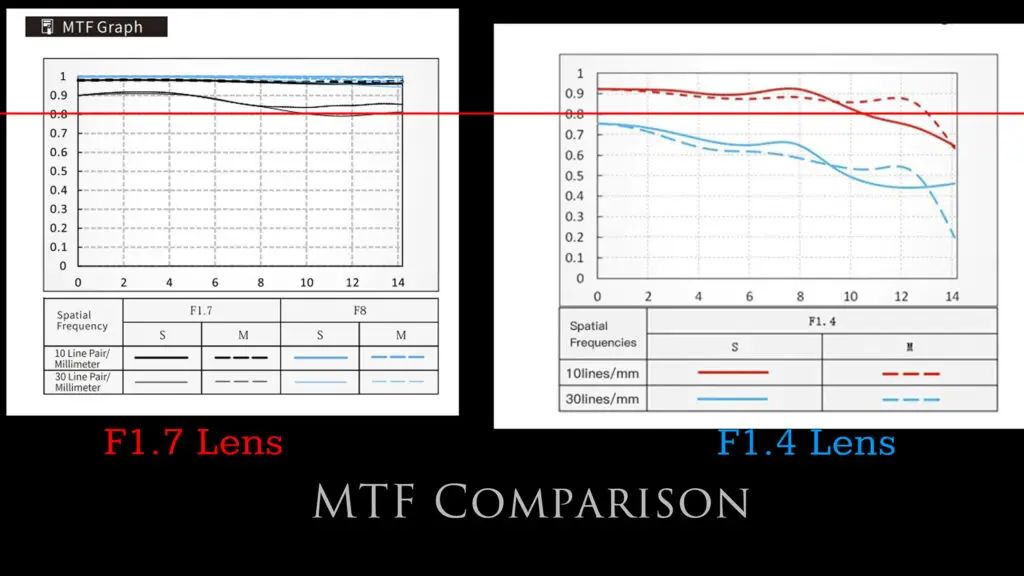
There is 15% more image sharpness in the center of the frame and and more than 20% more in the midframe. The corners are more like 40% sharper! This is going to be a very sweet bargain portrait lens. 56mm on Sony’s 1.5x crop APS-C sensor translates to 84mm, a prime portrait focal length.


This tells us all we need to know about who this new lens is for: much like Samyang’s “Tiny series”, this lens is for those who don’t care about bells and whistles and just want a lightweight, high performing lens. And this lens is incredibly compact – look how compact it is when compared to the Fuji XF 56mm F1.2 WR and the TTArtisan AF 56mm F1.8 (another impressive little lens!)
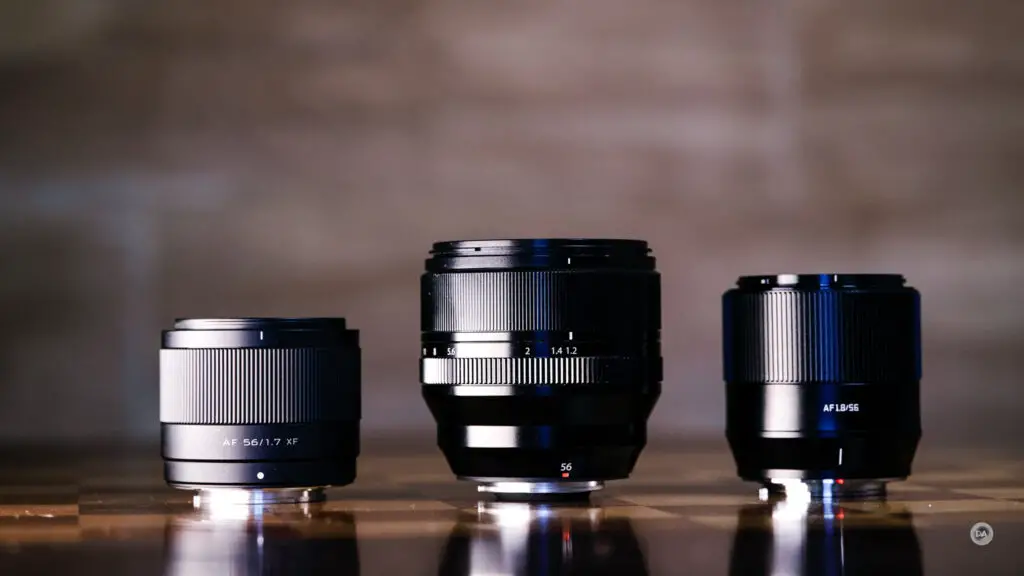
I’ll foness that I end up reaching for these little Viltrox lenses more often than expected. Very often the idea of a throwing a small, light, tough, and high performing little prime into my bag is very, very attractive. So let’s dive into the details together.
This review is a mix of elements from my previous review (on Fuji) though updated with all of the specific
Sony details and many new photos taken on Sony.
Viltrox AF 56mm F1.7E Build and Handling
The first thing to note is the slightly unusual maximum aperture value. Similar lenses are going to be F1.8, not F1.7, but I like this move as it sets the lens apart and gives it a small but real advantage over F1.8 lenses. F1.8 is 2/3rds of a stop slower than F1.4, while F1.7 is 1/2 half stop slower. When swapping between this F1.7 lens and another lens with a maximum aperture of F1.8, I found that the Viltrox produced a 1/35th second shutter speed vs 1/30th second for the F1.8 lens. That’s not a lot of extra light gathering but it is something.

As noted, the Viltrox AF 56mm F1.7 eschews the heavier metal casing typically used for Viltrox lenses and embraces a more conventional, lightweight design in polycarbonates (engineered plastics). I wouldn’t call the build high grade here, but what I can say is that nothing about the plastics feel flimsy. It doesn’t have the feel of the early Samyang Tiny series lenses but instead feels tough and durable; its the kind of lens that feels like it could survive some falls (not that I intentionally dropped it!)

The new AF 56mm F1.7 is extremely compact, only 65mm in diameter (2.6″) and 54.7mm in length (2.15″). It weighs only 171g (6oz). You can see that this is an easy match even for a very compact camera like the ZV-E10 II.

Up front we have a 52mm filter thread, which is a small but relatively common filter size. The front of the lens fascia has a variety of information imprinted on it and has a classic profile. I’m a fan of having some lens information on the front fascia, as I feel it adds character to the lens. This lens presents a very nice face for an inexpensive lens.

There is a very slim lens hood included that bayonets into place but without as much precision and confidence as I would like. It doesn’t feel like it really “clicks” into place and locks particularly well. A lens pouch is also included. The pouch doesn’t add a lot of protection value, but, like the hood, at least it is included. There are many more expensive lenses that include neither a pouch or a hood.

This inexpensive series is set apart from most of Viltrox’s lenses in that there is no aperture ring in the design. There are no switches, either. The only feature on the lens barrel is a wide manual focus ring. The manual focus ring has a nice amount of damping and moves fairly smoothly. All manual focus aids (including automatic magnification of the focus area) will work with the Viltrox, though major focus changes will take a lot of rotations, so manual focus is better reserved for fine tuning.

The Viltrox AF 56mm has 9 blades in its aperture iris. The blades do a very reasonable job of maintaining a circular shape as the aperture is stopped down. When stopped down far enough, an 18 bladed sunstar will emerge, though it isn’t particularly well defined.
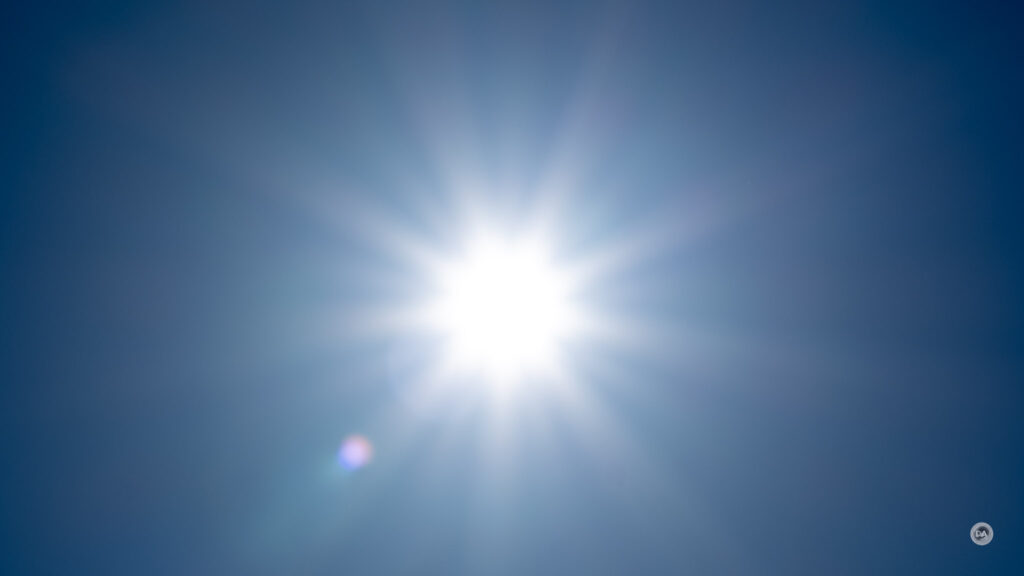
We have an important Viltrox standard in the form of a USB-C port on the metal lens mount that allows you to connect the lens to a computer and update the firmware directly. The firmware update process is very simple; just unzip the upgrade folder, drag the firmware update file to the folder that shows up when the lens is attached to the computer, and the update is done in seconds.
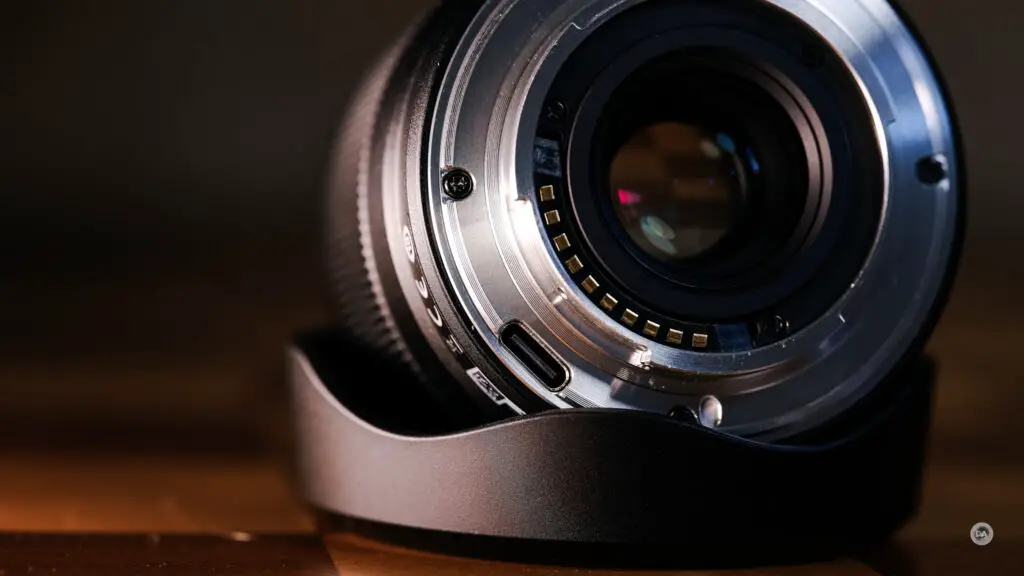
The Viltrox AF 56mm has a minimum focus distance of 55cm, which unfortunately isn’t particularly close and only produces a 0.11x magnification, which is a little lower than average for the class…on paper. In practice, however, the Sony version seems to manually focus down to 50cm and produce a higher magnification level than I saw on Fuji.

In fact, when I compared it in the real world to another 85mm (full frame) lens that I was testing at the time (I can’t yet reveal which), the Viltrox clearly has a much higher magnification even though that lens claims to have a 0.12x magnification.

While some Viltrox lenses have started to come with weather sealing, this inexpensive 56mm lens does not have it. It does have a HD Nano multilayer coating with water-resistant and antifouling coating on the front element.

Though short on bells and whistles, the Viltrox AF 56mm F1.7E does excel in one key area: it is very compact and lightweight. And while there aren’t any special features, the lens feels sturdy and well made. As I noted in the intro, this is a lens designed for a specific market, and I feel like Viltrox has made the right choices in order to give us a functional lens that at the same time is extremely inexpensive.
Viltrox AF 57mm F1.7 STM Autofocus
In a thoroughly unsurprising turn of events, autofocus is much improved on Sony as compared to the Fuji X-mount version of the lens. The Viltrox AF 56mm F1.7 STM utilizes a lead-screw type stepping focus motor (STM) that makes fast and definitely quiet focus changes. Focus felt silent unless I put my ear up next to the barrel, where I could hear some very light whirring during major focus changes. Focus speed is much faster than on Fuji, with both indoor and outdoor focus changes coming near instantly. I was much more confident shooting action on the E-mount version than I ever was on X-mount.

I was able to track Nala successfully though an extended burst sequence. This isn’t fast movement, but the persistent movement of coming towards the camera seems to be quite challenging for certain lenses. In this sequence of 40 images I had consistently good focus right through to the final frame.

I was able to successfully nail focus on bees even when in flight.


I also had easier success tracking birds in flight, particularly gulls soaring around Wasaga Beach, Canada.


Bottom line is that the E-mount version is much more flexible in terms of the types of subjects that you can take on with lens. Where I didn’t feel like the X-mount was well suited for action, the E-mount version (and Sony’s superior AF system) makes action much more of a possibility.
Clearly autofocus for less challenging subjects is pretty effortless. Point and shoot.

I tested low light focus on the ZV-E10 II at its maximum of ISO 32,000, and while I wasn’t overly impressed by the amount noise in the JPEG image, I can attest that the autofocus was no problem.

Video focus pulls were 100% better on Sony, with smooth and positive focus transitions from one subject to another even in a challenging situation. Focus breathing is fairly low as well.
My hand test went great, as transitions from my hand to my eye and back were smooth and confident, and the speed of focus pulls was much better on Sony.
Real world focus transitions in video were solid. Focus was fairly solid and stable, and transitions from one subject to another weren’t jumpy or abrupt, though they weren’t particularly cinematic, either. Here’s a still from one of those transitions.

Bottom line is that autofocus performance was pretty fantastic for a lens that costs well under $200.
Viltrox AF 57mm F1.7 Image Quality
The Viltrox AF 56mm F1.7 has an optical design of 11 elements in nine groups. What’s surprising in such an inexpensive lens is how many of these are exotic elements. There are four ED (extra-low dispersion) elements along with an additional 3 HR (high refractive index) elements, leaving just four of those elements being ordinary ones. We’ve previously noted how good the MTF chart for this bargain lens looks:
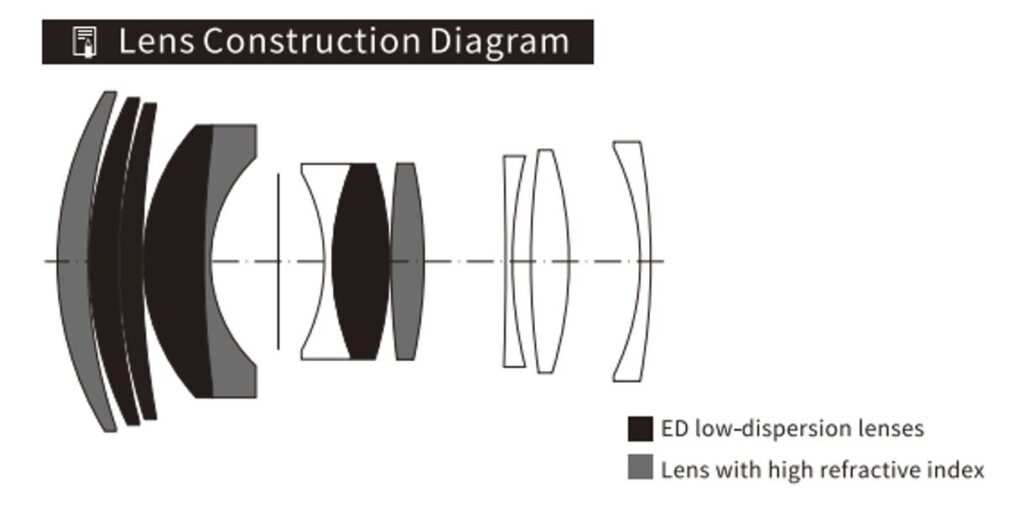

All of this adds up to a lens that is punching above its weight class optically, and thus has no issues handling the 26MP resolution limit currently available on Sony E-mount APS-C cameras. The 56mm F1.7E has no problem filling the frame with detail.

This shot was taken on the 26MP APS-C mode of the full frame a7RV, and you can see that even if we sample the lower corner that the image is full of detail.


The fact that E-mount lenses can also be used on full frame cameras allows to take a look at how much of the full frame sensor this lens covers. This is not a “stealth” full frame lens; you will see a lot of hard, mechanical vignette where the full frame sensor is not covered.

That being said, when I cropped out the hard, mechanical vignette, I did have about 36MP of resolution left over, so you can get a little extra flexibility there if you don’t mind doing a few additional steps.

We’ll work through the chart results by first looking at distortion and vignette. The lens clears this hurdle largely unscathed, as there is minimal distortion, and (as is typically the case), there is less distortion on Sony than on Fuji (for some reason!)

I used a-2 to correct a tiny bit of pincushion distortion, though for portrait work you probably don’t want to correct that (a bit of pincushion distortion is flattering). Vignette required a +41 to correct (2 stops, or about one less than on Fuji), though it is fairly linear and largely “works” for portraits, creating a natural vignette that draws the eye to the subject. You can see in this comparison that the left side is profile corrected and the right is uncorrected. I personally favor the uncorrected result.

The 56mm F1.7 shows very low amounts of longitudinal chromatic aberrations. Fringing is well corrected, leaving very little fringing on either my test results:
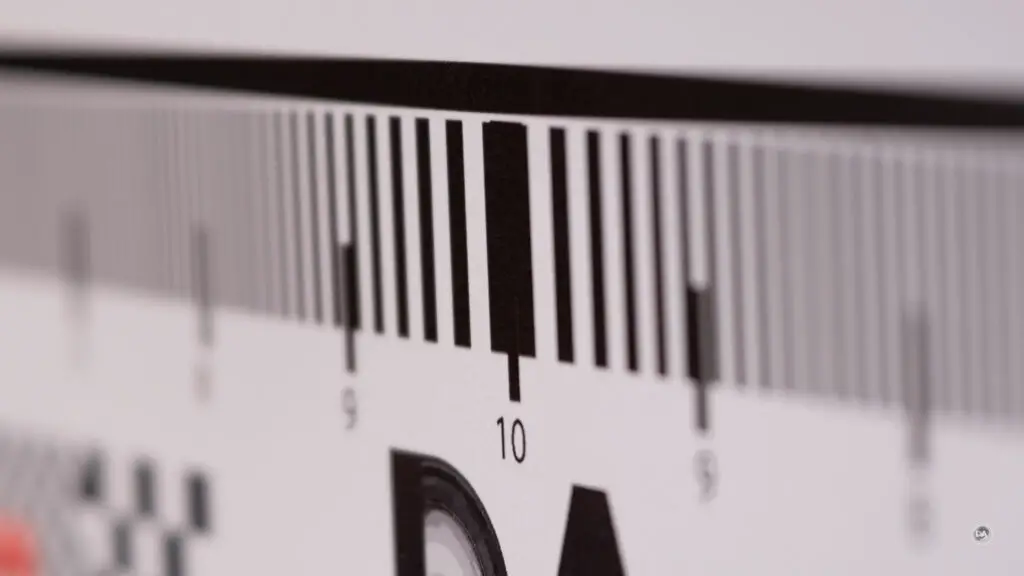
…but more importantly on real world results. On this bright white blossom there is minimal fringing on the edge transitions or in the defocused areas.


Lateral Chromatic Aberrations usually show up along the edges of the frame as fringing on either side of high contrast areas (like bare branches framed at the edge of images), but that doesn’t seem to be an issue here. You can see a nice, neutral transition from black to white on the corners of my test chart.

I also didn’t spot any issues in real world results.
So how about resolution and contrast? All chart tests done on the APS-C mode on my a7RV (26MP) using a tripod and a two second timer. Here’s a look at my test chart:

And here are the crops (at 200% magnification) from the center, mid-frame, and extreme corner at F1.7:



We see here what the MTF chart suggested. Peak sharpness is actually slightly off center (more in our mid-frame image – the blue bill), while corner results are unusually good for this type of lens. This is a remarkably even performance in a way that I rarely see in lenses and almost never in budget lenses. To put that edge performance in perspective, here’s a look at the Sirui Sniper 56mm F1.2 stopped down to F1.8 on Fuji:

And the Viltrox AF 56mm F1.7E has no problems in the real world, either. Here’s an F1.7 shot with a 100% crop that shows great detail.


I suspected that this lens would look great on 26MP after I tested it at the 40MP level on Fuji, and that proves very true. Real world images have a lot of punch and detail and feel like they have come off a much more expensive lens.

Stopping down to F2 showed slightly more contrast, with a bit more coming at F2.8.

I also found that centering was excellent, with equal results in all four corners…and those results are excellent.
Stopping on down to landscape apertures doesn’t increase detail much further, but that’s only because it is already excellent by F2.8. Landscape images look great, however.

As per usual, diffraction will start to show up by F11 and will become more pronounced even on this lower resolution point by the minimum aperture of F16:

Skin tones are warm but natural, creating nice looking portrait results. While the difference isn’t obvious, I did prefer shooting at F2 to F1.7 for portrait work as I felt there was more variation in the highlights and shadows on my subject’s faces due to that slight improvement in contrast.

If you’re looking for a budget portrait lens for APS-C E-mount, this is clearly a nice contender.
I also found that colors in general looked good.

Landscape colors looked great, too. That’s huge, as my chief objection to early Viltrox lenses is that I didn’t love the colors from their optical glass. They have grown so much as a lensmaker, and it is apparent even in these budget lenses.

Obviously the amount of sharpness this inexpensive lens is capable of is nothing short of impressive.
I was also fairly pleased with the quality of bokeh. On the negative front, you can see that there is some of the typical deformation of the circular shape of specular highlights near the edges of the frame (lemon shape):
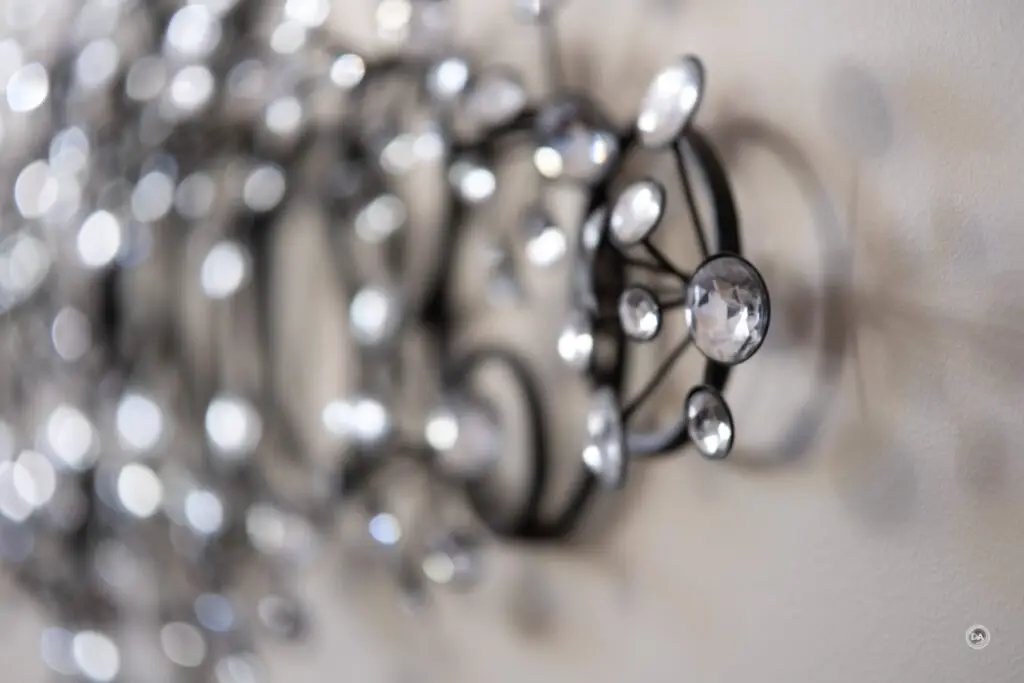
I did find that there was more outlining than on high end lenses, but overall the quality of the bokeh was pretty decent.

I found that bokeh at portrait distances was generally favorable – soft and without any hard edges to grab the attention.

The subject isolation isn’t going to match an F1.2 or F1.4 lens, obviously, but the quality of the blur is nice.
At close focus distances, the Viltrox AF 56mm F1.7 produces lovely, blurred backgrounds, like in this shot of its attractive competitor – the TTArtisan AF 56mm F1.8:
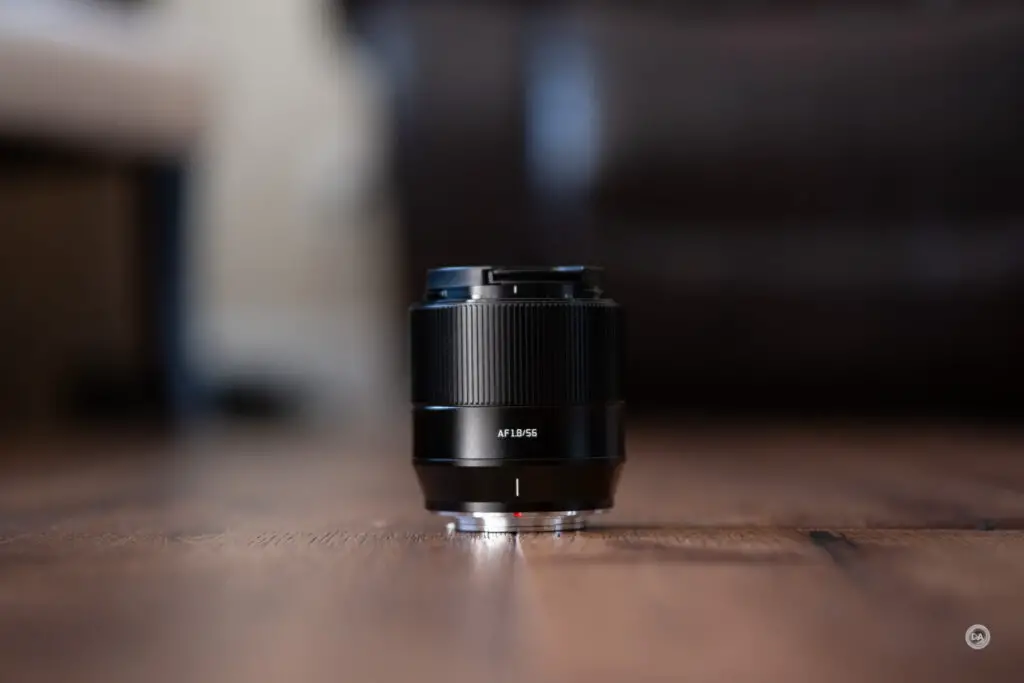
Flare resistance was also fairly good for a short telephoto lens. I saw so mild ghosting artifacts when point right at the sun, but nothing significant. I also tried moving around to get some veiling at large apertures, and the final result is the worst result I could get…and it’s not bad!

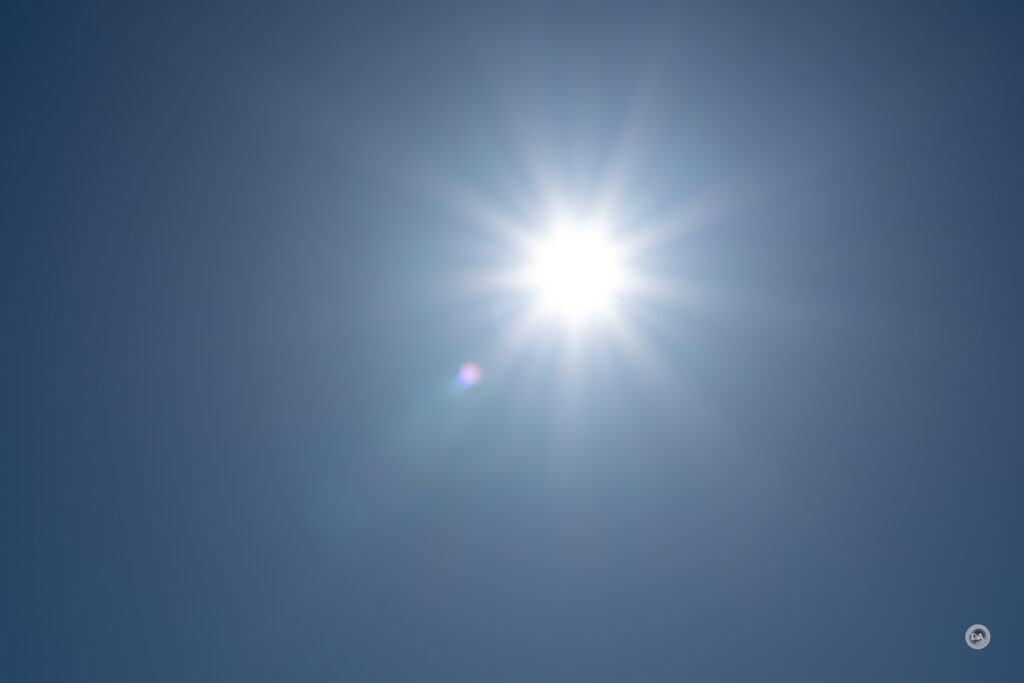

This inexpensive lens houses some very impressive optics. There aren’t too many flaws here.

If you’re on a tight budget and want a portrait lens, look no further. The bang for the buck here is fantastic. This lens feels as compelling as many lenses that I’ve reviewed costing 2-3 times as much. You can see more beautiful images by visiting the image gallery here.
Conclusion
I’ve been surprised by how engaging I have found these budget Viltrox lenses. I love their new higher end lenses with the amazing optics and premium feature set, but there’s also a lot to be said for lightweight, inexpensive lenses that exceed your expectations for their performance. These lenses have tapped into the same fondness I feel for lenses like Samyang’s Tiny series in that there is always a bit more than meets the eye there.

The Viltrox 56mm F1.7E was a very nice match for a compact camera like the ZV-E10II, adding very little weight or bulk, but I also liked it as a lightweight telephoto to throw in the bag with a full frame camera to get that 85mm angle of view with a very small lens.

Because the lens is sharp from corner to corner wide open, it was also a great little lens to carry when the sun went down. You can shoot with impunity at F1.7, and still get sharp, high detailed images. And because I had a clear idea of what to expect in the build, I have no disappointments there. While there’s nothing fancy here, the lens feels tough and well made. The optics exceeded my expectations in just about every way, and on Sony the autofocus is now excellent. But this is a LOT of lens for the price of under $180 USD, and I think this is a great budget portrait option for Sony shooters who don’t want to spend a lot. It’s also one of the sharpest budget lenses I’ve ever tested. That’s impressive, and is just one more reason why Viltrox as a brand may be the biggest disrupter that the lens market has seen in a long time.

Pros:
- Lightweight, compact design
- Lens feels tough and well made
- Well executed, smooth manual focus ring
- USB-C port for firmware updates
- Good focus accuracy
- Able to keep up with action on Sony
- Good video AF
- Outstanding sharpness from F1.7 on
- Very nice bokeh
- Low distortion
- Good color rendering
- Fantastic price to performance ratio
Cons:
- No weather sealing
- No on lens features
__________________________________________________________________________________________________
GEAR USED:
Purchase the Viltrox AF 56mm F1.7 @ Viltrox (use code DUSTINABBOTT for 5% off) | B&H Photo | Adorama | Nuzira | Amazon | Amazon Canada | Amazon UK | Amazon Germany
_________________________________________________________________________
Purchase the Sony a7RV @ B&H Photo | Adorama | Amazon | Camera Canada | Sony Canada | Amazon Canada | Amazon UK | Amazon Germany
__________________________________________________________________
Purchase the Sony a7IV @ B&H Photo | Adorama | Amazon | Camera Canada | Sony Canada | Amazon Canada | Amazon UK | Amazon Germany
_________________________________________________________________
Purchase the Sony Alpha 1 @ Camera Canada | B&H Photo | Adorama | Amazon | Sony Canada | Amazon Canada | Amazon UK | Amazon Germany | Ebay
_________________________________________________________________
Want to support this channel? Use these affiliate links to shop at: B&H Photo | Amazon | Adorama | Camera Canada | Amazon Canada | Amazon UK | Ebay | Make a donation via Paypal
Buy DA Merchandise https://bit.ly/TWIMerch

Keywords: Viltrox, Viltrox AF 56mm, Viltrox 56mm, AF, 56mm, F1.7, f/1.7, STM, APS-C, Review, Sony a6700, Sony ZV-E10 II, Sony a7RV, Review, Hands On, Dustin Abbott, Real World, Comparison, Sharpness, Bokeh, Flare Resistance, Autofocus, Image Quality, Sample Images, Video, Photography, let the light in, weathersealing, #letthelightin, DA

